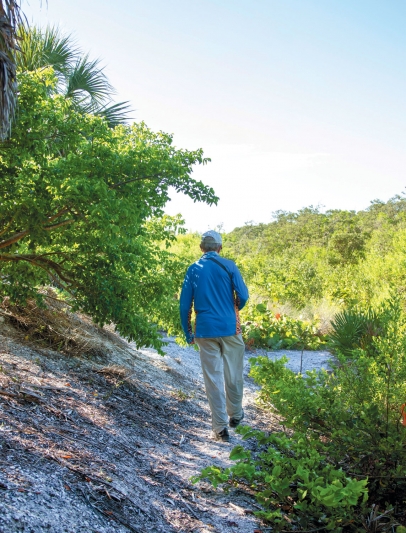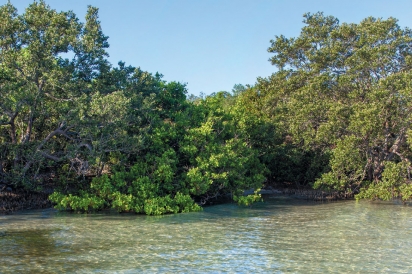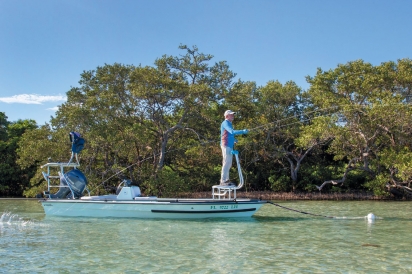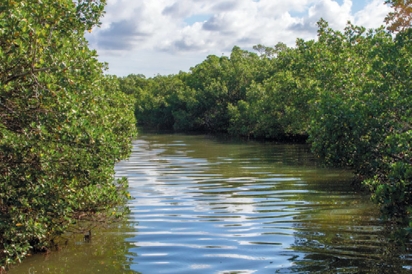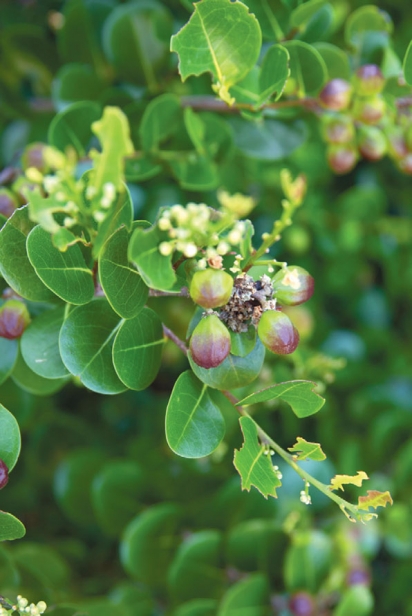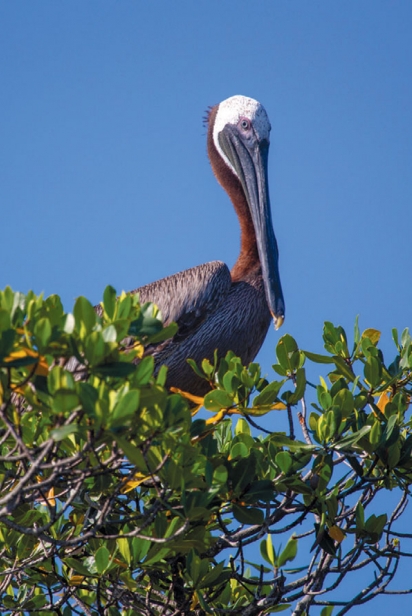Sister Keys Conservancy
Envision, if you can, a summer day lost to time when the air above the mainland, heated by the sun, rises into the atmosphere causing cool, moist air to rush in from the Gulf. That primordial sea breeze drives a lone mangrove propagule across the submerged seagrass flat to its final resting place among debris on a partially exposed flat. Holding there though cycles of rising and falling tides, it eventually sinks its roots into the surrounding substrate. Over millions of years of island building, natural detritus multiplies around the rooted mangrove, trapping other propagules that cluster together to form what would eventually become known as the Sister Keys.
In 1890 a series of federal projects to improve intracoastal navigation was begun, dredging channels through the shallow bays to allow shipping of the region’s rich abundance of agricultural products. Dredged-up spoil created the created uplands we see today helping to support species both native and exotic. The scant history of these keys is steeped in tales maybe true or false. It is rumored that at one time a disgruntled owner bulldozed many of the mangroves because he wasn’t allowed to build on the islands. In times of war the surrounding flats were used by bombers for target practice; craters still exist as deep blue holes on the verdant grass flats.
In the 1960s the islands were owned by a group of investors who intended to create a tropical resort to be dubbed Shangri Isles. The development would have transformed the Keys with a marina, an 18-hole championship golf course, luxury homes, a hotel, and an airport. Fortunately, economics dictated a different course for the islands and the plants and animals that called them home. The next two decades they would remain essentially the same, except for seeds and flotsam brought there by the birds, winds, and tides.
Then in the late ’80s the islands’ owners put them up for sale. They were advertised as a “tropical paradise” where 80 acres could be developed. This was a time when a spurt of development came to the area and Tidy Island on the east shore of the bay sprouted homes at the expense of the mangroves. An adjacent island, Jewfish Key, was also undergoing development and blue septic tanks that would be buried for future homes dotted the shore on platted lots.
This activity caused a group of citizens to pose the question: “Wouldn’t it be nice to have at least one island in the bay that didn’t have a house on it?” Those progressive citizens became the Sister Keys Conservancy in 1989 and lobbied for two years to raise money and awareness to buy and protect the islands. Conservancy members launched a fund-raising campaign that held bake sales and a music festival and lobbied media outlets as well as local, state, and national politicians.
They also gathered letters of support from the Nature Conservancy, The Trust for Public Lands, Mote Marine Laboratory, The Sarasota Bay Estuary Program, Audubon, the Longboat Key Garden Club, the Sierra Club, the American Littoral Society, the Longboat Key Chamber of Commerce, and many more. In the end they raised $50,000 towards the $1.5 million needed to buy the islands. In 1992 they approached the Longboat Key Town Commission and found a receptive ear as the Town needed open space for a new Comprehensive Plan.
In June of that year Town Commissioners voted unanimously to purchase the islands for $975,000. Capping off an already successful year the Conservancy was awarded the Theodore Roosevelt Conservation Award at the White House in Washington, DC.
The islands sat untouched for 15 years until 2007, when a developer approached the Commission with a mitigation project to offset plans for dredging at a building site on Perico Island. The Town agreed and over the next year all the invasive flora was removed, native species were planted and a two-acre wetland was created. The developer agreed to monitor and maintain the natural health of the islands for five years and in 2012 that responsibility was transferred to the Town of Longboat Key.
In the 11 years since the mitigation the wetlands have experienced a remarkable transformation as mangroves naturally recruited among the planted Spartina grasses now reach over eight feet high. During that time the islands were “adopted” by Sarasota Bay Watch in an agreement with the Town. The Sister Keys are the largest group of undeveloped islands between Charlotte Harbor and Tampa and represent the remarkable regenerative power of nature.


